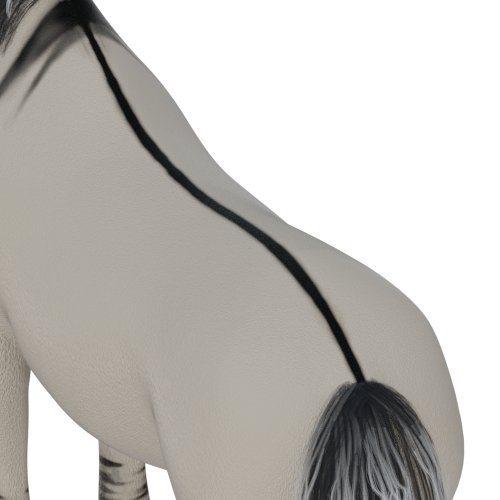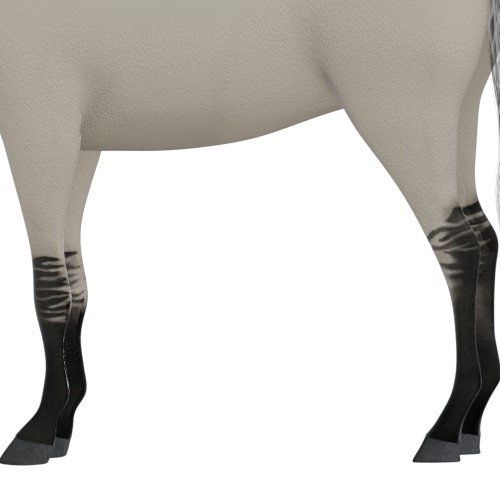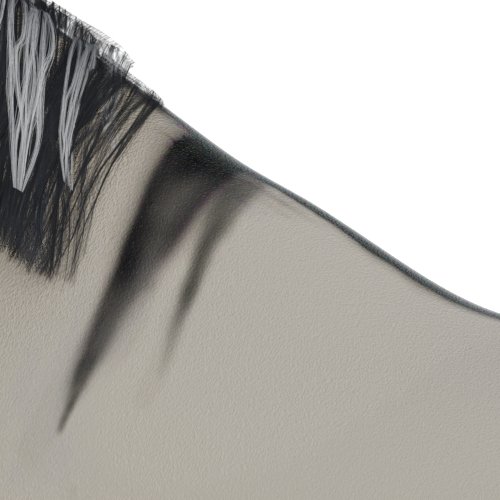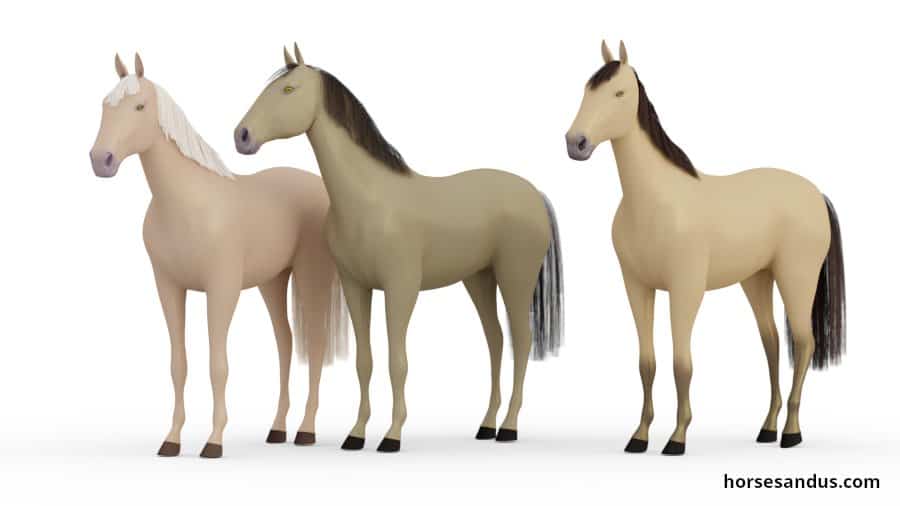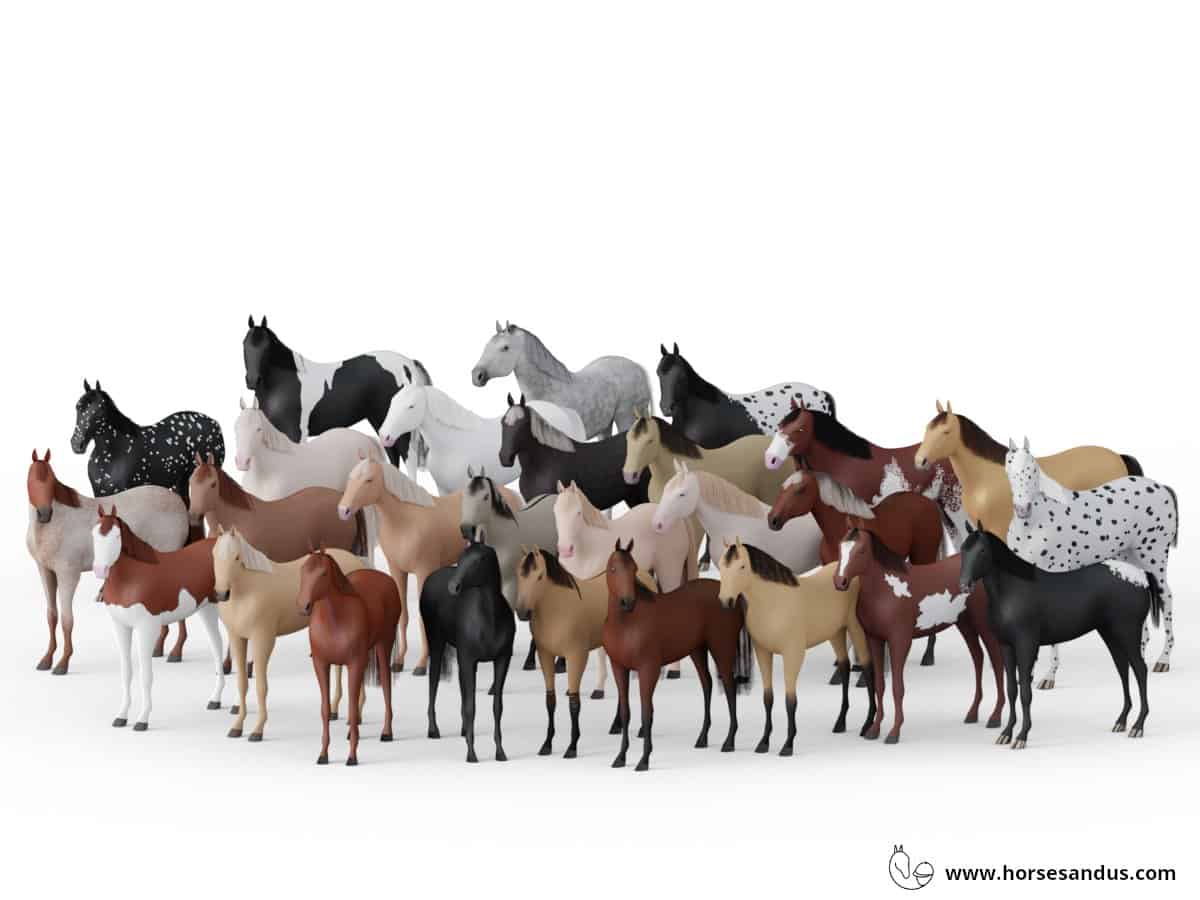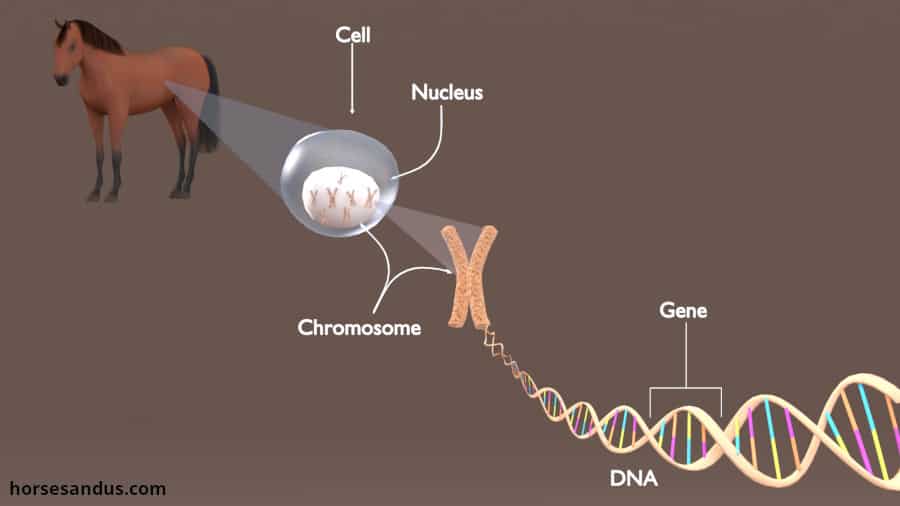A Dun horse has a wild-type coat color produced by the Dun dilution gene, which affects both red and black pigment. Dun lightens the body coat but does not act on the points (mane, tail, and legs). Dun horses also have primitive markings such as Dorsal stripe, Zebra stripes, Shoulder blade stripes, and Guard hairs (frosting) on the mane and tail.
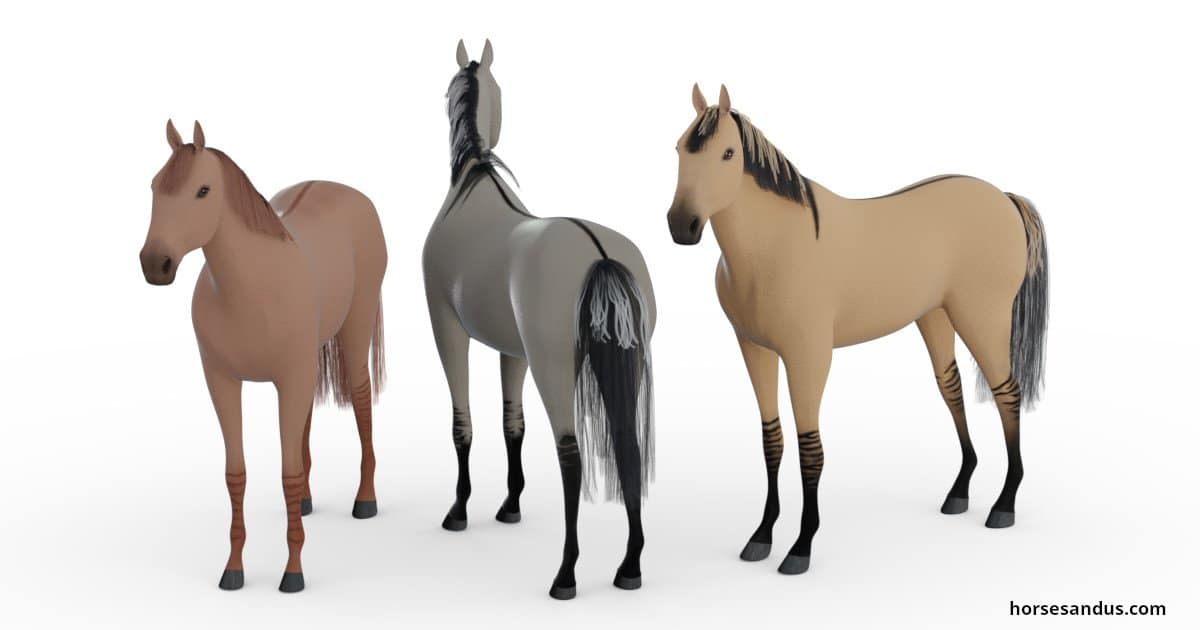
The Dun gene is ancient and was the only dilution known to exist in the primitive horse. The pale hair color in Dun horses provides camouflage as it makes a horse in the wild less visible to its predators
After domestication, most horses were selected over many generations to have more striking-looking coat colors and patterns and therefore lost their wild-type camouflage: pale hair with the primitive markings known as the Dun pattern.
Dun Horse Primitive Markings
Dun horses also show primitive markings and features which include:
The Dun dilution on the individual hair
An interesting and unusual fact is that the diluted hairs on dun horses are not evenly pigmented the whole way around.
There is a section of intense pigmentation along the hair’s length, on the side that faces outward from the horse’s body, while the side that faces inward has almost no pigment.
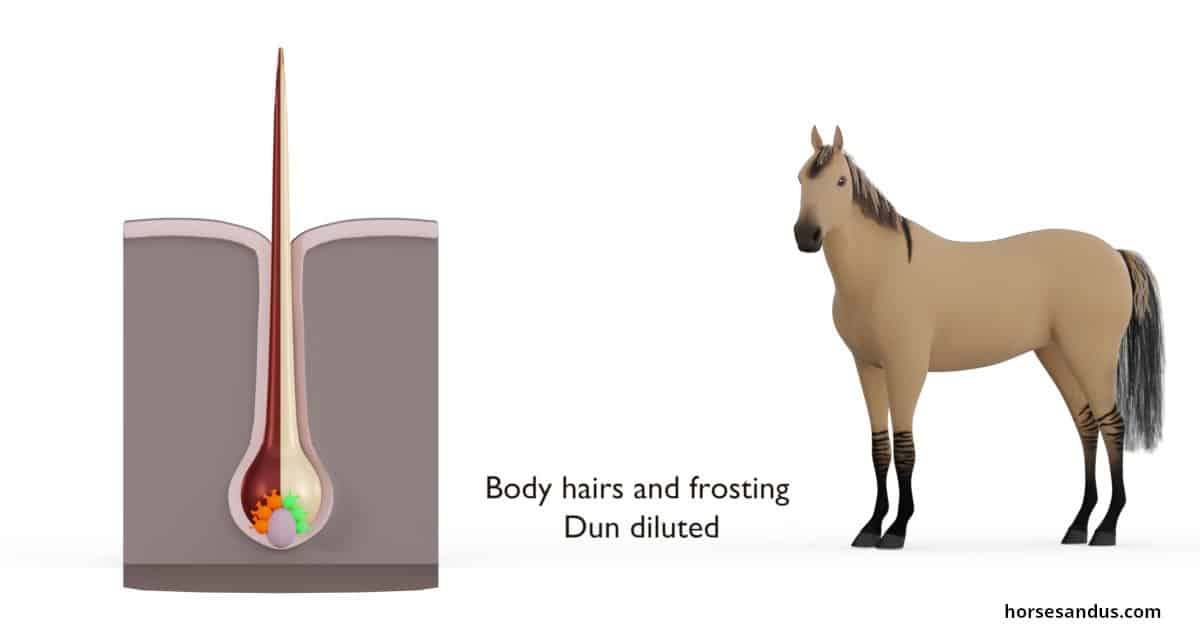
However, the hairs from the dark areas (primitive markings and points) are intensely pigmented all the way around each individual hair.
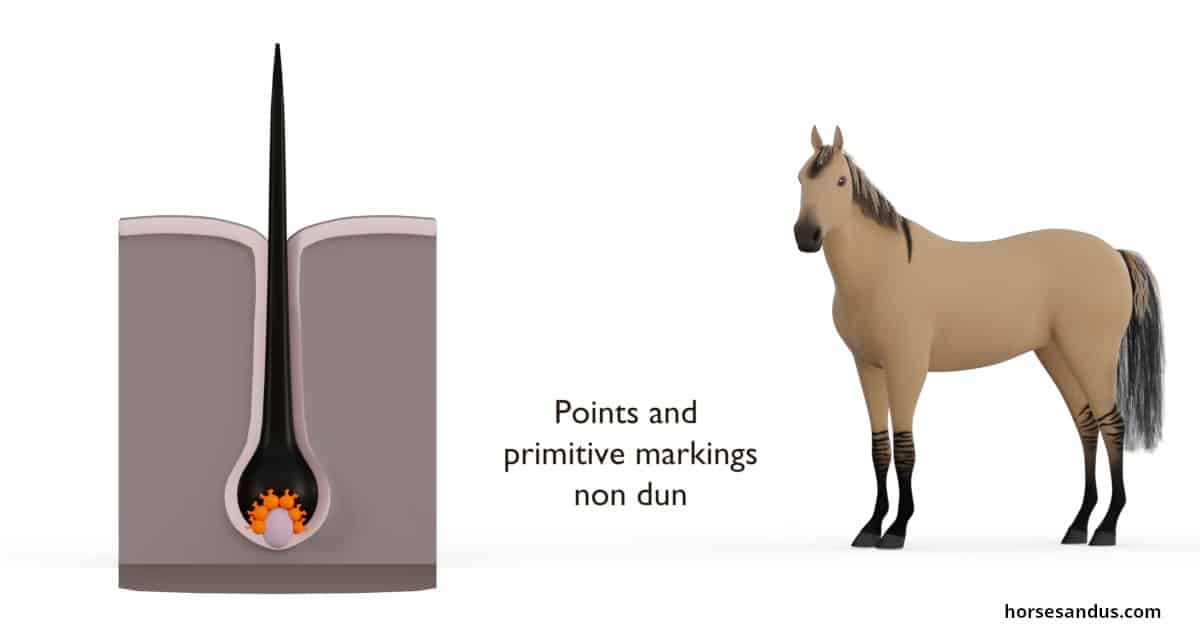
Dun dilution on the 3 base coat colors
The coat color of a dun horse depends on the underlying base coat color.
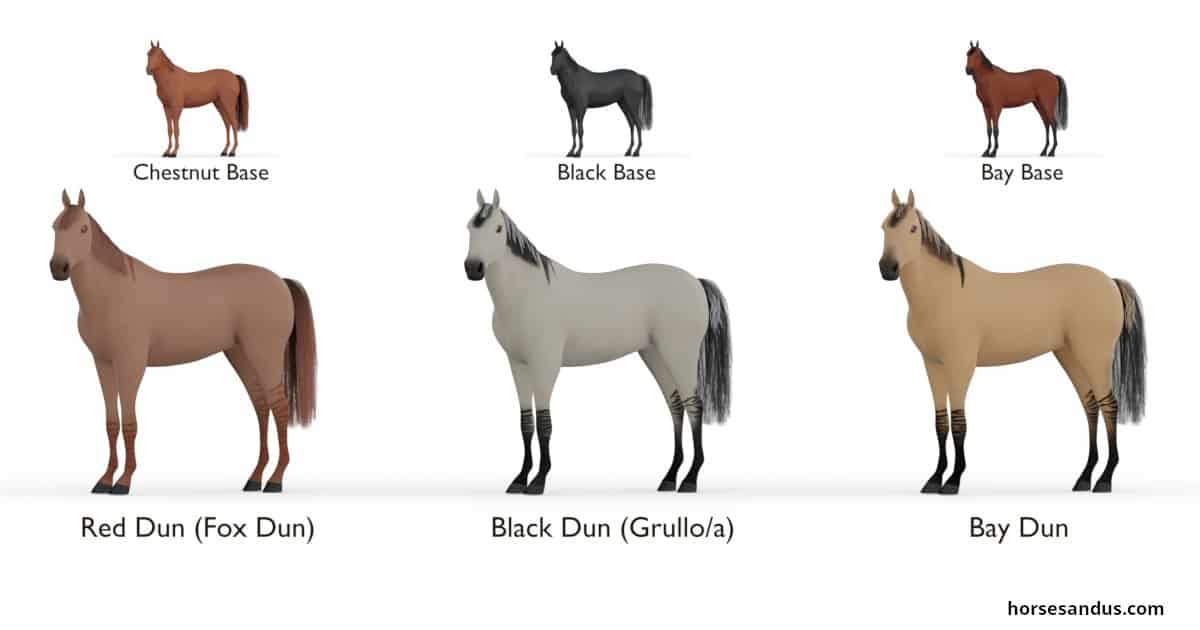
Red Dun Horse (Fox Dun or Claybank)
Red dun horse color comes from a dun dilution on a chestnut base coat. The body color can vary from a very light peach to a deep red. The points (mane, tail, and lower legs) are generally a darker reddish shade (the shade of the undiluted base coat). The dorsal stripe and other dun factor markings will be red.
Black Dun Horse (Grullo or Blue Dun)
Black dun horse color, commonly known as grullo, is a dun dilution on a black base coat. The points and primitive markings are black, and the horse usually has a face mask. This dilution creates a smokey blue color (thus also the name Blue Dun) that ranges from light mouse grey to deep slate grey.
However, this grey color has no relation to the color roan or true grey.
This is the rarest and the most sought after of all the dun shades.
Bay Dun Horse
Bay dun horse color is a dun dilution on a bay base coat. This is the most common shade of Dun. They usually have a tan or gold body with black points. The Leg black hairs may not be true black but a brownish color that looks black from a distance.
The primitive markings can be dark red (the shade of the undiluted base coat), brown or black. Sometimes they may have a face mask.
Bay Dun and buckskin horses are often mistaken for one another because they look very similar. The main difference is that dun horses usually have stronger primitive markings. But in some cases, even these differences are so subtle that they are almost indistinguishable.
The genes behind the dun dilution

The Dun dilution is produced by the Dun gene which is dominant and represented by D.
There are two types of non-dun color, non-dun1, and non-dun2, caused by different Dun gene mutations. These are recessive and represented by nd1 and nd2, respectively.
- Non-dun1 (nd1) does not dilute the coat color but may keep the primitive markings (pseudo-dun). Sometimes this can lead horse owners to think that these horses are Dun.
- Non-dun2 (nd2), which is the most common in modern horse breeds, does not dilute the coat color and does not produce the primitive markings.
Studies indicate that the non-dun2 mutation only occurred after domestication.
Contrarily, dun and non-dun1 variants were found in DNA from horses that lived about 43,000 years ago, long before domestication.
The below table shows the phenotypes expressed by the different possible dun and non-dun genotypes. The following example is based on the bay
base coat color.
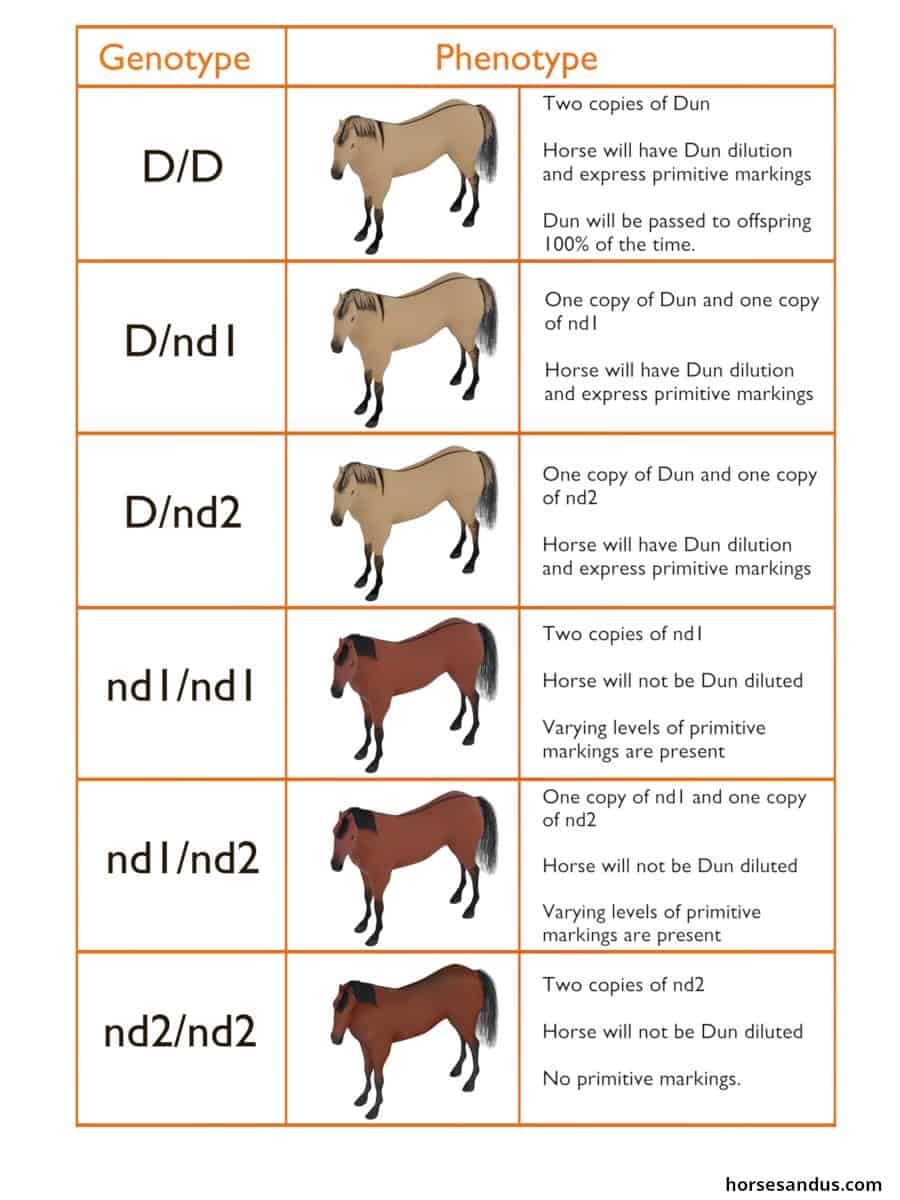
Dun Genes Inheritance
Using the following Punnett squares with a Dun Bay as an example, we can see some possible outcomes from different genotype combinations.
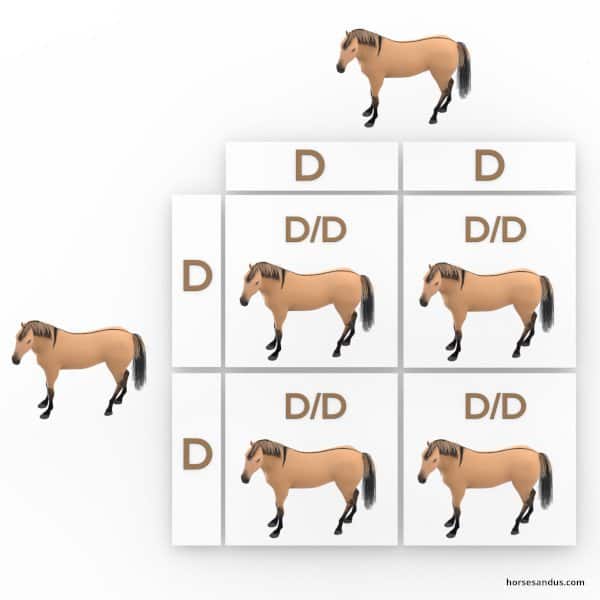

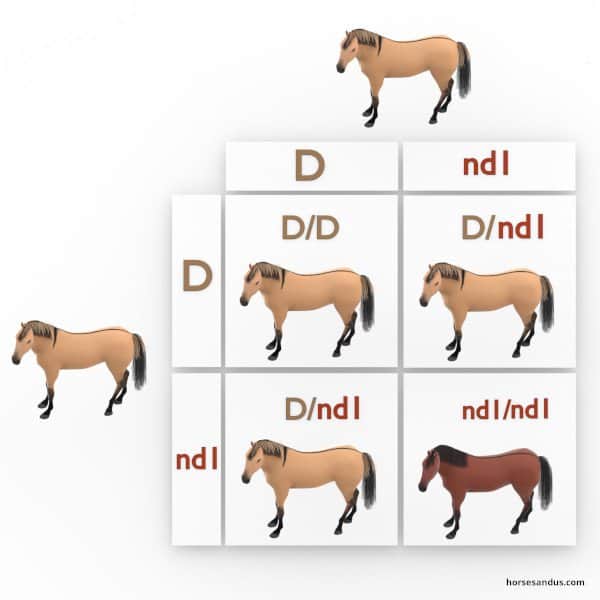
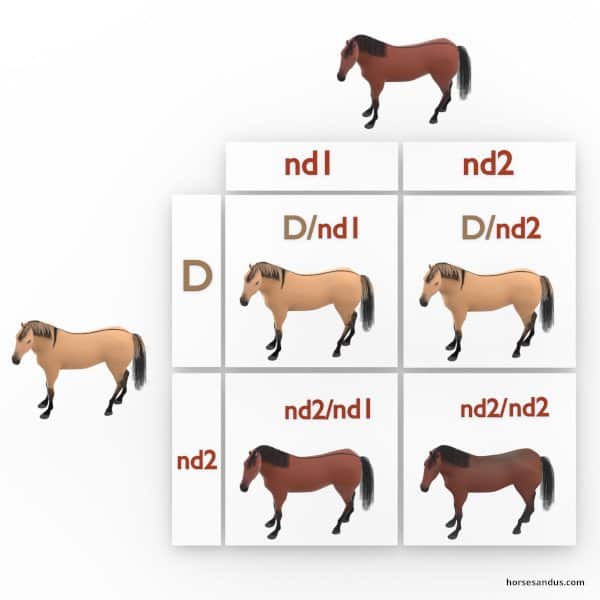
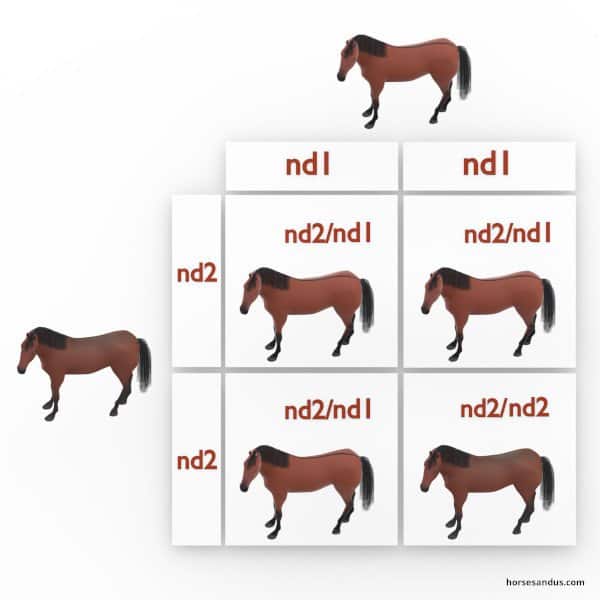
Horse breeds That Can Have the dun coat color
Ancestral and wild breeds, which still exist nowadays, such as Sorraia (from Portugal) and Przewalski (from Mongolia), are predominantly or entirely dun. The extinct Tarpan was also dun.
Dun dilution is also common in some breeds, like, for example, Icelandic, Fjord, Highland Ponies, Kathiyawadi, American Quarter horse, and the Mustang.
Further Reading
If you would like to learn more about horse colors and white patterns, you may want to read the following books, available on amazon.
The links below that lead to products on Amazon are affiliate links and I earn a commission (with no additional cost for you) if you make a purchase.
The following books are an introduction to horse colors and white patterns which are full of images and very easy to understand.
The Equine Tapestry: An Introduction to Colors and Patterns The Ultimate Guide to Horse ColorsA more technical book about horse colors, but still very easy to understand.
Equine Color GeneticsSources
If you would like to learn more about this subject, you may want to check out the following links.
Genetics of camouflage and the Dun pattern in horses: https://www.uu.se/en/research/news/article/?id=5896&typ=artikel
Radial asymmetric deposition of pigment in the growing hair: https://www.researchgate.net/publication/287646074_Regulatory_mutations_in_TBX3_disrupt_asymmetric_hair_pigmentation_that_underlies_Dun_camouflage_color_in_horses
